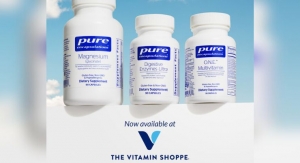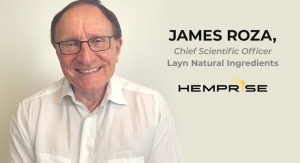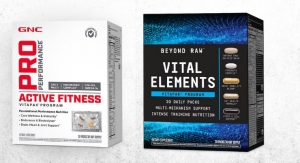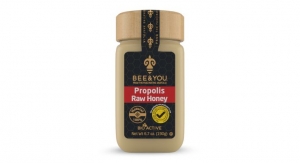Lisa Olivo, Associate Editor10.01.12
Digestive health is a huge concern for consumers—and with good reason. The American Gastroenterological Association reports that nearly half of all Americans experience digestive issues that impact their sleep patterns, exercise and participation in recreational and social activities.1
“As consumers’ lives become increasingly hectic, and they are eating quickly and on the go, and perhaps not making healthy choices, their need for good digestion becomes even more important,” explained Angela Ubalde, natural product specialist at SPINS, Schaumburg, IL.
As a result, the market for digestive enzymes is alive and well, and growing in double-digits. Compared to a year ago, SPINS says the market for Digestive Aids & Enzymes is up 12% in natural food stores and food/drug/mass channels combined to $706 million (excluding Whole Foods and Wal-Mart sales). In the natural channel, the market grew 11% to $106 million, while in the food/drug/mass channel sales grew more than 12% to nearly $600 million (see Table 1). Within this broader category, "miscellaneous enzyme products and digestive formulas" brought in $26 million in the natural channel (nearly 9% growth) and $85 million in the FDM channel (2.5% growth).

In addition to the area of digestive enzymes, systemic enzymes support a wide spectrum of health concerns ranging from inflammation to cardiovascular health to immune support to sports performance. With the growing trend of consumers linking healthy digestion to overall health, and burgeoning indication areas utilizing systemic enzymes, the nutritional enzyme market is expanding.
“I can tell you that the demand for enzymes in the dietary supplement industry continues to grow significantly, even during the worst of the recession,” stated Mike Smith, vice president, Specialty Enzymes & Biotechnologies, Chino, CA.
Digestive Support
It’s no secret that Americans struggle with their diets. The Centers for Disease Control and Prevention, Atlanta, GA, reports that presently more than one-third of U.S. adults are obese.2 In addition to the genetic, socioeconomic and health-related issues that surround this complex health crisis, many simply struggle to eat nutritious raw and unprocessed foods, which can take a toll on the digestive system, and overall health. Raw and unprocessed foods that are rich with naturally occurring digestive enzymes are needed in order to digest properly and absorb beneficial nutrients in the body. Fast or processed food strips food of enzymes. Even the act of cooking depletes food’s enzyme content.
“Digestively speaking, when anyone is suffering from gas, bloating, indigestion, heartburn or constipation, typically they’re either over consuming or they’re eating the wrong types of foods, and the enzymes that our digestive system supplies is inadequate. These individuals might benefit from the addition of supplemental enzymes with their meals,” explained Tom Bohager, founder and president of Enzymedica, Port Charlotte, FL.
Our poor diets are catching up to us, and consumers are looking for enzymes for support.
“Digestive enzyme blends are seeing the most growth, according to SPINS data. The top selling formulas in the natural channel for the last 52 weeks are for GI discomfort, including acid indigestion and heartburn,” said Kim Elrick, natural product specialist at SPINS. “Consumers clearly need support with digesting, metabolizing and assimilating all the highly processed and heat damaged foods that are conveniently available. The natural consumer is purchasing digestive enzymes to combat the imbalances produced from consuming too many enzyme-lacking foods.”
Beyond general digestive troubles, enzymes that support more serious food intolerances such as lactose and gluten intolerance are growing areas in the enzyme market.
According to the Celiac Disease Foundation, Woodland Hills, CA, three million people in the U.S. have Celiac Disease, yet the majority (95%) of people with the disease don’t know they have it.3 However, consciousness regarding the disease and its serious health effects are becoming better understood.
“Gluten certainly appears to be something that consumers are looking for help with. Not everyone has Celiac Disease; some are just sensitive or somewhat intolerant to it. They might feel a little bloated from gluten, or they just don’t like the way it makes them feel. In this instance, a supplemental enzyme approach is ideal,” said Mr. Bohager.
Ms. Elrick of SPINS offered a similar view. “The gluten free market is likely here to stay since there are many digestive issues in which glutinous grains are the culprit and the awareness of these issues is prevalent. Those with gluten sensitivities need to be especially careful when dinning out, so why not add enzymes to help the body process unforeseen gluten contaminants?” she said.
An area where digestive enzymes have long been popular is within the treatment and management of lactose intolerance. Individuals who suffer from this intolerance are lacking in the digestive enzyme lactase, which breaks down lactose, a sugar found in milk and milk-derived foods. The National Institute of Diabetes and Digestive and Kidney Diseases, Bethesda, MD, reports an estimated 30 million to 50 million American adults are lactose intolerant.4 Genetics plays a key role in lactose intolerance, and certain ethnic groups are more susceptible. Studies find that people of Latin American, African and Asian decent have a higher prevalence of lactose intolerance, while people of European descent have a much lower incidence of the intolerance.
While lactose intolerance management with enzymes is already popular for adults, Ms. Elrick of SPINS see potential in a far younger demographic. “A colic formula containing the lactase enzyme for infants is also a top-dollar item in the conventional channel,” she explained.
Looking forward, Mr. Bohager predicts that enzymes addressing the overgrowth of Candida in the GI tract will become more popular. “There are numerous products on the market now that are enzyme-based for helping balance Candida in the digestive tract, and they do very well,” he said.
While supplements containing pre/probiotics, fiber or over-the-counter digestive aids might be more popular than enzymes currently, Mr. Smith of Specialty Enzymes & Biotechnologies feels that “growth will continue because enzymes produce results you can actually feel.”
He added, “The general public still predominantly uses antacids like Tums and H2 blockers like Pepcid. These are profitable products, so there is little incentive for major pharmaceutical corporations to market enzymes—the only notable exceptions being Beano and Lactaid. The same applies to systemic enzymes.”
Still, Mr. Smith remains optimistic in the market’s future. “Enzymes will continue to grow as they have over the past two decades by word of mouth, recommendations from health practitioners open to alternative medicine, and publications in the natural products industry.”
Systemic Growth
While digestive enzymes are more popular, systemic enzymes used for a variety of health concerns represent the next frontier in enzyme supplementation. With applications ranging from inflammation support to cardiovascular health to immune support, purveyors of systemic enzymes are looking for ways to educate the public and get the word out about how these enzymes can promote good health.
“Our next approach is to focus on the systemic support that enzymes can provide,” explained Mr. Bohager of Enzymedica. “That is a huge challenge because people have a real difficulty moving from digestion to let’s say immune function, with essentially the same raw material.”
Despite these challenges, the payoff here could be great, as the health benefits associated with these enzymes are significant and broad in their range.
“The systemic enzymes represent a particularly exciting area of investigation, and are really the cutting edge of enzyme therapy,” Mr. Smith of Specialty Enzymes & Biotechnologies asserted. “Systemic enzymes are predominantly protease enzymes that focus in on two particular areas: joint inflammation and cardiovascular health. Some proteases come from fruit, like bromelain and papain.”
“Other enzymes are the result of fermentation of fungal or bacterial organisms,” Mr. Smith continued. “Animal derived enzymes, like pancreatin and trypsin are still prevalent, though their use seems to be declining. Research has shown that proteases like nattokinase (NattoSEB) and serratiopeptidase (Peptizyme SP), exhibit significant anti-inflammatory and fibrinolytic activity, making these enzymes ideal for joint inflammation and cardiovascular health.”
New Markets & Further Innovation
With the expanding reach of enzymes focusing on aiding overall health, many consider the growing Baby Boomer population—who according to the U.S. Department of Health and Human Services is expected to grow to 19% of the country’s population by 2030—a potentially important market for enzyme companies to target.5
In the book Food Enzymes for Health and Longevity, author Dr. Edward Howell stated, “As we [age] the amount of enzymes in our body and excreted through sweat and urine continues to decline until we die. In fact low enzyme levels are associated with old age and chronic disease.” 6
In an attempt to hold on to good health in their later years, more elderly consumers are bound to look for support from enzymes, like they’ve done in other nutraceuticals markets such as immune support, cognitive health and bone health.
For these reasons, Peter Moodie, president of Enzyme Development Corp. (EDC), New York, NY, views Boomers as a promising audience for enzymes. “The indication area that makes the most sense to me is the one that’s tied to the aging of the population,” he said. “They can greatly benefit from general digestive formulations, but also those enzymes that have a history, through some evidence (anecdotal or otherwise), of having an effect on things like joint inflammation.”
In addition to aiding digestive problems associated with aging, joint health is an important concern for Baby Boomers. According to a report titled “How Boomers Will Change Healthcare” from the American Hospital Association, by 2030 nearly one out of every two Baby Boomers (more than 26 million individuals) will be living with arthritis. The report also estimates that eight times more knee replacements will be performed than they are currently.7
This is where enzymes targeting inflammation and joint health will be essential, according to Pete Zambetti, director of global business development, Health & Nutrition, Capsugel, Morristown, NJ. “If these types of benefits can be proven with the right studies,” he explained, “I expect a lot of Baby Boomers, who might for example try to play golf and can’t because their shoulders hurt from inflammation, to turn to enzymes. If enzymes can really be proven to improve athletic performance or even just help the ‘weekend warriors’ reduce inflammation so you can stay active without pain, I think that’s a huge benefit.”
And those active folks looking for enzyme support aren’t just limited to the Boomer set—the sports nutrition market is becoming increasingly aware of enzymes’ benefits, too.
According to Specialty Enzymes & Biotechnologies’ Mr. Smith, “In sports and bodybuilding nutrition, strong blends of protease enzymes can help athletes digest and utilize larger amounts of protein in their diet, thus reducing catabolism of muscle tissue.”
In a 2008 study published in The Journal of the International Society of Sports Nutrition, scientists examined protease supplementation to see if it could benefit athletes experiencing inflammation, muscle damage and soreness as a result of intense exercise. The research team concluded: “results indicate that prophylactic protease supplementation prior to damaging eccentric exercise significantly attenuates decreases in skeletal muscle force production capability when compared to placebo. It appears that a systemic eosinophilia may be partially responsible for this effect.” 8
Skin care and skin health could also be a growing area of interest for enzyme use in the future, according to Mr. Zambetti. “Look for innovations using enzymes with skin health. I think if companies go outside the box, outside of digestive health, with things like inflammation and skin diseases, there’s a lot of potential,” he said.
One peer-reviewed study examined the use of proteolytic enzymes in speeding up the healing of bruising, edema and associative pain and inflammation in skin wounds. More specifically, the study, “Oral Nutritional Supplementation Accelerates Skin Wound Healing: A Randomized, Placebo-Controlled, Double-Arm, Crossover Study,” found that 77% of normal, healthy subjects experienced accelerated soft-tissue wound healing when treated with the oral enzyme supplement InflammEnz. As a result, the researchers predicted that enzymes might have a big opportunity in the treatment of patients to help with healing postoperative from plastic surgery.9
Developing effective delivery systems that support these ingredients is also key to this market’s future growth.
“For systemic enzymes, the challenge is delivery through the stomach. For that, we have developed DR caps that have a release, which, depending on the patient, might have 20-30 minutes before dissolution. That helps deliver more of the systemic enzyme to where it can do its work,” explained Mr. Zambetti.
With these new technologies and continued support for new research into the various benefit areas of enzymes beyond digestive health, the market is poised for continued success.
References:
1 American Gastroenterological Association, Foundation for Digestive Health and Nutrition Survey, "The Everyday Effects of Digestive Problems”, May 2008.
2 Centers for Disease Control and Prevention,http://www.cdc.gov/obesity/data/facts.html
3 Celiac Disease Foundation, http://www.celiac.org/index.php?option=com_content&view=article&id=181&Itemid=258
4 National Institute of Diabetes and Digestive and Kidney Diseases, NIH, DHHS. Digestive Disease Statistics. Retrieved August 12, 2005, from http://digestive.niddk.nih.gov/statistics/statistics.htm.
5 Department of Health & Human Services, Administration on Aging- http://www.aoa.gov/aoaroot/aging_statistics/index.aspx
6 Howell, Edward. Dr.. Food Enzymes for Health and Longevity. Lotus Press, 1994. p28.
7 How Boomers Will Change Healthcare - American Hospital Association - aha.org.
8 Journal of the International Society of Sports Nutrition, “The effects of prophylactic protease supplementation on markers of muscle damage prior to and following intense eccentric exercise: preliminary findings”, September 2008.
9 Plastic and Reconstructive Surgery Volume 114, “Oral Nutritional Supplementation Accelerates Skin Wound Healing: A Randomized, Placebo-Controlled, Double- Arm, Crossover Study”, July 2004.



























